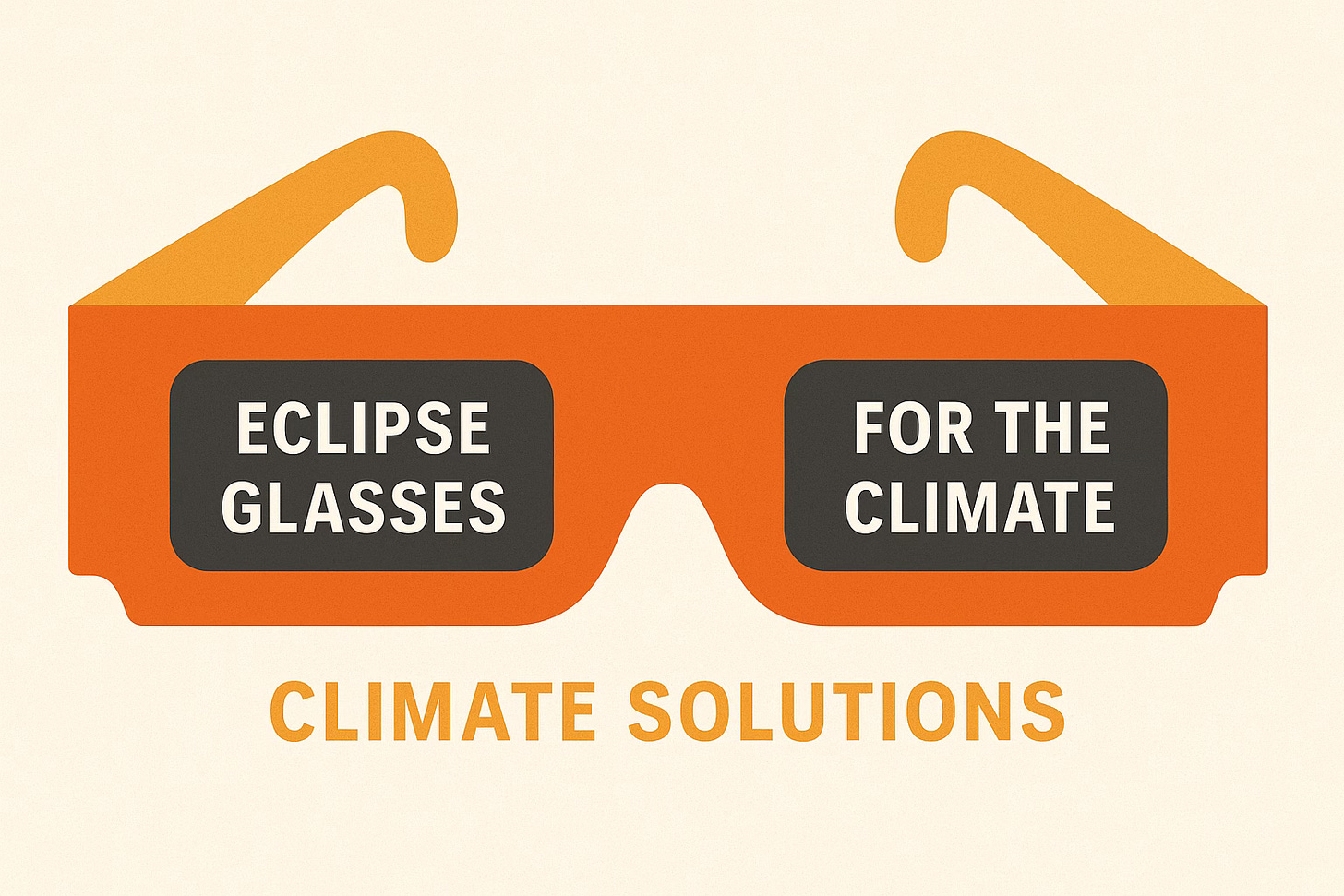Talking to Yourself (& Others!) About Climate Change
The Importance of Good News For Staying In The Fight
Note: If you’re interested in a version of this article tailored to other forms of activism let me know!
For a long time, I struggled with how to talk about climate change. Not just with other people, but even with myself.
I knew it mattered to name the crisis we are living through. But every time I brought it up (often clumsily, over lunch) the mood collapsed.
People got sad, uncomfortable, and defensive.
Conversations shrank. Justifications about plastic forks and takeout containers filled the silence where connection should have been.
I wasn’t trying to make anyone feel ashamed about their composting habits. I was trying to reach for something real, and I found myself accidentally shutting people down.
It took me awhile to realize that how we talk about collapse matters just as much as that we talk about it.
And maybe, to stay connected — to ourselves, to each other, to the possibility of a livable future, we need to consciously & intentionally bring solutions into the conversation.
Why Our Brains Need Good News
Our minds aren’t neutral processors of information. They’re survival machines, finely tuned to notice danger and loss more sharply than possibility or beauty.
Research in positive psychology suggests that to stay resilient and engaged — especially when confronting overwhelming realities — we generally need about three positive experiences for every one negative. Otherwise, our brains start to shut down, freeze, or disengage.
This “3:1 ratio” was introduced by psychologist Barbara Fredrickson. While later critiques challenged the exact math, the broader finding remains solid: flourishing tends to happen when positive emotional experiences meaningfully outnumber negative ones over time. Without that balance, the scale tips and instead of clarity, we get paralysis.
Eclipse Glasses
To me, a maintaining a solutions focus is like wearing Eclipse Glasses for the Climate.
In a solar eclipse, the light from the sun is so intense, so overwhelming, that your brain can’t actually make sense of what’s happening. You’re flooded, blinded, forced to turn away.
Eclipse glasses don’t deny the brilliance of the sun. They don’t pretend that the intensity isn’t real.
They simply filter the overwhelming force into something the human mind can actually engage with — allowing us to witness the wonder, the awe, the truth of the eclipse that is unfolding.
In the same way, flooding the zone with climate solutions is a tool for clarity, not for denial.
It helps regulate the emotional glare of collapse so that our brains can stay open, curious, and committed.
It lets us really see the problem — not by diminishing its enormity, but by making the act of looking sustainable.
Good news doesn’t cancel out the bad. It simply keeps us from going blind.
Comments are open. If you’ve got something to say or want to share what stood out to you, I’d love to hear it.
What Changed When I Shared Solutions
Once I started talking about climate solutions, the lunch table conversations changed.
Instead of sadness, shutting down, or defensiveness, I witnessed curiosity. Energy. Imagination.
People leaned in. They asked questions. They wanted to know more.
Good news didn’t erase the challenges but rather made it possible to stay present within them.
It gave us somewhere to place our desire — not fragile hope, not hollow reassurance that everything will be fine, but the deep, steady longing for a brighter future that we all shared.
Desire doesn’t need certainty. But it benefits from inspiration.
Desire doesn’t demand a guarantee of success. But it certainly benefits from witnessing success.
Desire simply asks us to stay connected, to stay awake, to stay willing to imagine and act.
And that is where focusing on solutions can help.
On Responsive Desire
Not all desire arrives fully formed.
In the realm of sexuality, there’s a concept called responsive desire — the idea that for some people, desire doesn’t spark spontaneously; it awakens through touch, attention, and connection.
It emerges in response to engagement, rather than spontaneously before it.
I think about that a lot when it comes to activism, and especially the climate crisis.
When the future feels foreclosed.. When despair or numbness have dulled our imagination, it can feel impossible to desire anything beyond survival.
But when we make space to witness not only the collapse, but also the creativity and stubborn aliveness of the solutions rising to meet it — something shifts.
Desire begins to stir.
Climate solutions can awaken responsive desire.
Not naïve optimism. Not certainty. But the kind of grounded, aching, active longing that keeps us reaching for what is still possible. 💖
I write for free, once or twice a week, but the real joy is hearing from readers. You’re always welcome to respond. Hit 'reply' or send me a message below.
If you are looking for a regular dose of climate solutions, I’m sharing them on BlueSky: https://bsky.app/profile/bricchapman.bsky.social
Stop by and say hi! 👋
Citations:
Fredrickson, B. L., & Losada, M. F. (2005). Positive affect and the complex dynamics of human flourishing. American Psychologist, 60(7), 678–686.





